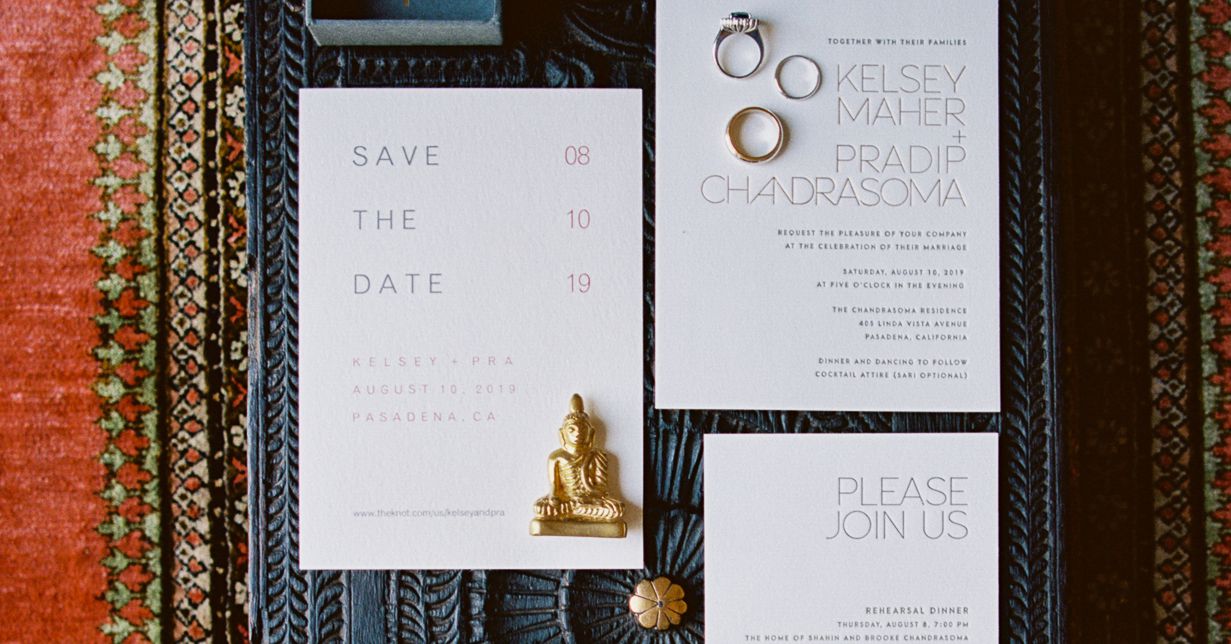When it comes to announcing your upcoming event, one of the crucial decisions to make is whether to opt for printed save the date cards or go the digital route. Both options have their own set of advantages and drawbacks, and understanding them can help you choose the best approach for your specific event. In this article, we’ll explore the pros and cons of printed and digital save the date cards to help you make an informed decision that aligns with your event goals and preferences.
I. Printed Save the Date Cards:
A. Pros of Printed Save the Date Cards:
- Tangibility and Sentimentality: Wedding save the date cards offer a tangible and physical presence that digital alternatives may lack. Holding a beautifully designed card in their hands can evoke a sense of anticipation and excitement in your guests. Moreover, for some individuals, receiving a physical invitation carries a sentimental value that cannot be replicated by digital methods.
- Personalization and Creativity: Printed save the date cards provide ample room for creativity and personalization. You can choose from a wide range of designs, paper types, colors, and finishes to create a card that perfectly aligns with your event theme and style. Handwritten notes, custom illustrations, or embellishments can be added to make each card feel truly unique and special.
- Accessibility and Reach: Not all of your guests may be technologically inclined or have reliable access to digital devices or the internet. Acrylic save the date cards ensure that everyone, regardless of their technological proficiency, can receive and understand the event details. It guarantees inclusivity and ensures that no one misses out on the important information.
Cons of Printed Save the Date Cards:
- Cost and Time: Printing and mailing save the date cards can be a costly affair. The expenses include design, printing, envelopes, postage, and potentially international shipping charges. Additionally, the process of creating and mailing physical cards takes time, especially if you have a large guest list. This can add to the overall planning timeline of your event.
- Environmental Impact: In an era of increasing environmental awareness, printing save the date cards can contribute to paper waste and carbon footprint. The production and disposal of physical cards have an ecological impact that may not align with sustainable event planning practices.
Digital Save the Date Cards:
Pros of Digital Save the Date Cards:
- Cost-effectiveness: Digital save the date cards are typically more cost-effective than their printed counterparts. Sending electronic invitations via email, social media platforms or event management tools eliminates the expenses associated with printing, postage, and physical materials. This can be particularly advantageous if you have a large guest list or a tight budget.
- Convenience and Efficiency: Creating and sending digital save the date cards is a quick and efficient process. With a few clicks, you can design an attractive digital invitation and instantly share it with your guests. This convenience extends to your guests as well, who can easily access the event details, RSVP, and save the date information directly from their devices.
- Interactive and Multimedia Elements: Digital save the date cards offer opportunities for interactive and multimedia elements that can enhance the guest experience. You can include videos, photo slideshows, links to event websites or registration pages, and interactive features like RSVP forms or embedded maps. These elements can provide additional information, create engagement, and build excitement among your guests.
Cons of Digital Save the Date Cards:
- Technological Limitations: While digital save the date cards are convenient, they rely on technology and internet access. Some of your guests may not be tech-savvy or may not regularly check their email or social media platforms. This can lead to missed notifications or a lack of awareness about the event details. Additionally, technical issues such as spam filters or email deliverability problems may affect the reception of digital invitations.
- Impersonal Touch: Digital save the date cards may lack the personal touch and sentimental value that physical cards provide. Some guests may perceive them as less formal or less special compared to printed invitations. The absence of a physical item to hold and display can make the announcement feel fleeting or easily forgotten.
Now that we have explored the pros and cons of both printed and digital save the date cards, how do you decide which option is right for your event? Here are some factors to consider when making your decision:
- Event Type and Theme: Consider the nature of your event and its theme. If you are organizing a formal wedding or a high-profile corporate event, printed save the date cards might be more appropriate to set the tone and create a sense of elegance. On the other hand, digital save the date cards can work well for casual or modern events, where convenience and interactivity are valued.
- Budget: Evaluate your budget and determine how much you can allocate to save the date cards. Printed cards involve costs such as design, printing, and postage, which can add up, especially if you have a large guest list. Digital cards are typically more cost-effective since they eliminate printing and postage expenses.
- Guest Preferences: Consider the preferences and technological habits of your guests. If your guest list consists of mostly tech-savvy individuals who regularly check their email and engage with digital content, digital save the date cards may be the more effective option. However, if you have guests who may appreciate the sentimental value of a physical card or have limited access to digital devices, printed cards may be a better choice.
- Environmental Considerations: Take into account the environmental impact of your decision. Printed cards contribute to paper waste and have a carbon footprint due to the production process. If sustainability is a priority for your event, digital save the date cards align better with eco-friendly practices.
- Timeframe: Consider the timeline of your event. Printed save the date cards require additional time for design, printing, and mailing. If your event date is approaching quickly, digital cards provide a faster and more efficient way to communicate the save the date information to your guests.
- Desired Level of Personalization: Think about how much personalization you want to incorporate into your save the date cards. Printed cards offer more opportunities for unique designs, custom illustrations, and handwritten notes. If personalization is important to you, printed cards may be the preferred option.
Combining Printed and Digital Elements:
In some cases, a combination of printed and digital save the date cards can be an effective approach. You can send out printed cards to select guests who may appreciate the tangible experience while using digital cards for the majority of your guest list. This allows you to balance personalization and cost-effectiveness, catering to the preferences and needs of different individuals.
Conclusion:
Deciding between printed and digital save the date cards ultimately depends on your event goals, budget, guest preferences, and environmental considerations. Printed cards offer tangibility, personalization, and inclusivity, but they can be costly and have an environmental impact. On the other hand, digital cards provide cost-effectiveness, convenience, and interactive elements, but they may lack sentimentality and face technological limitations. Consider the pros and cons outlined in this article and choose the option that best suits your event vision and the expectations of your guests.



